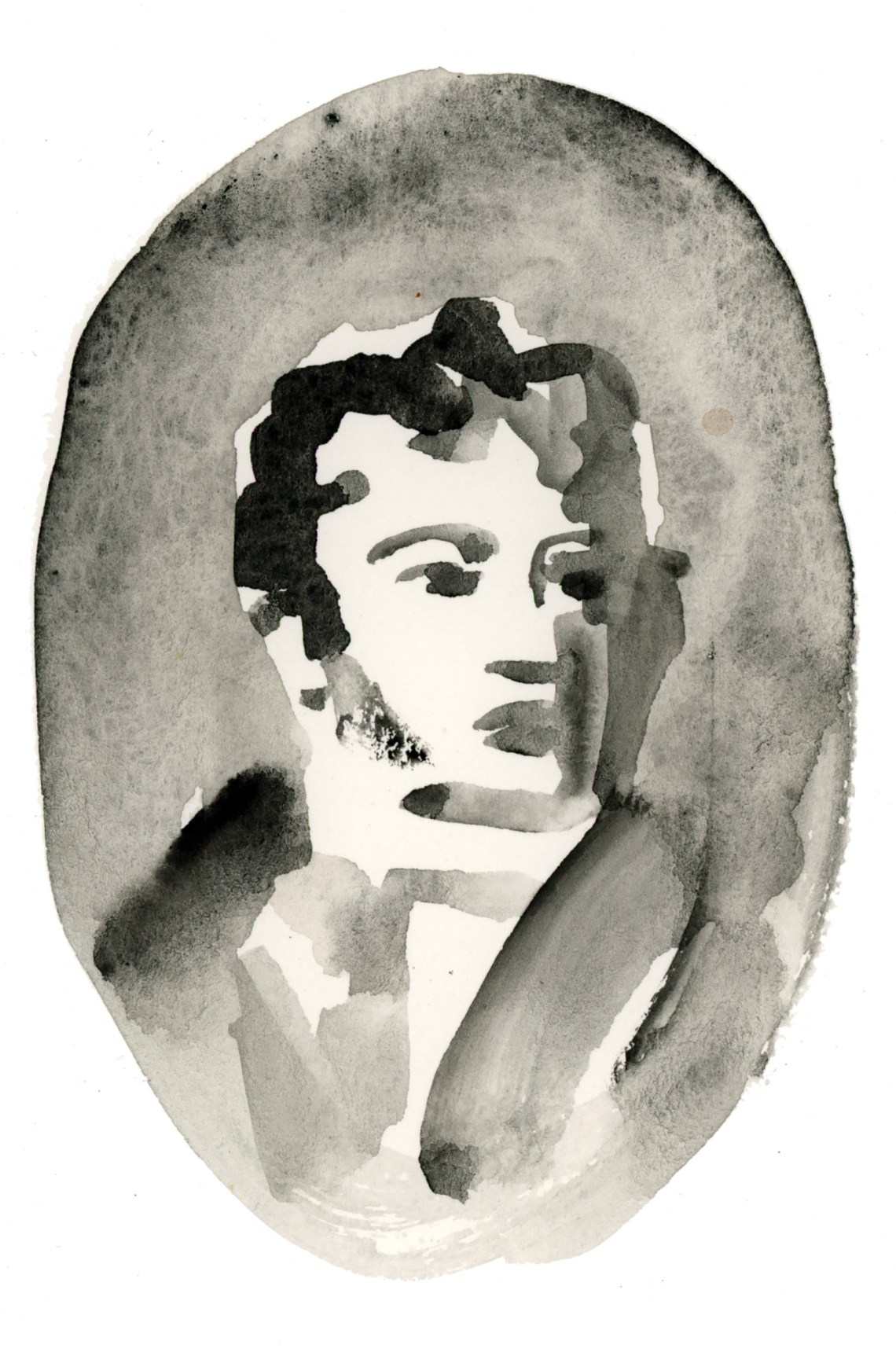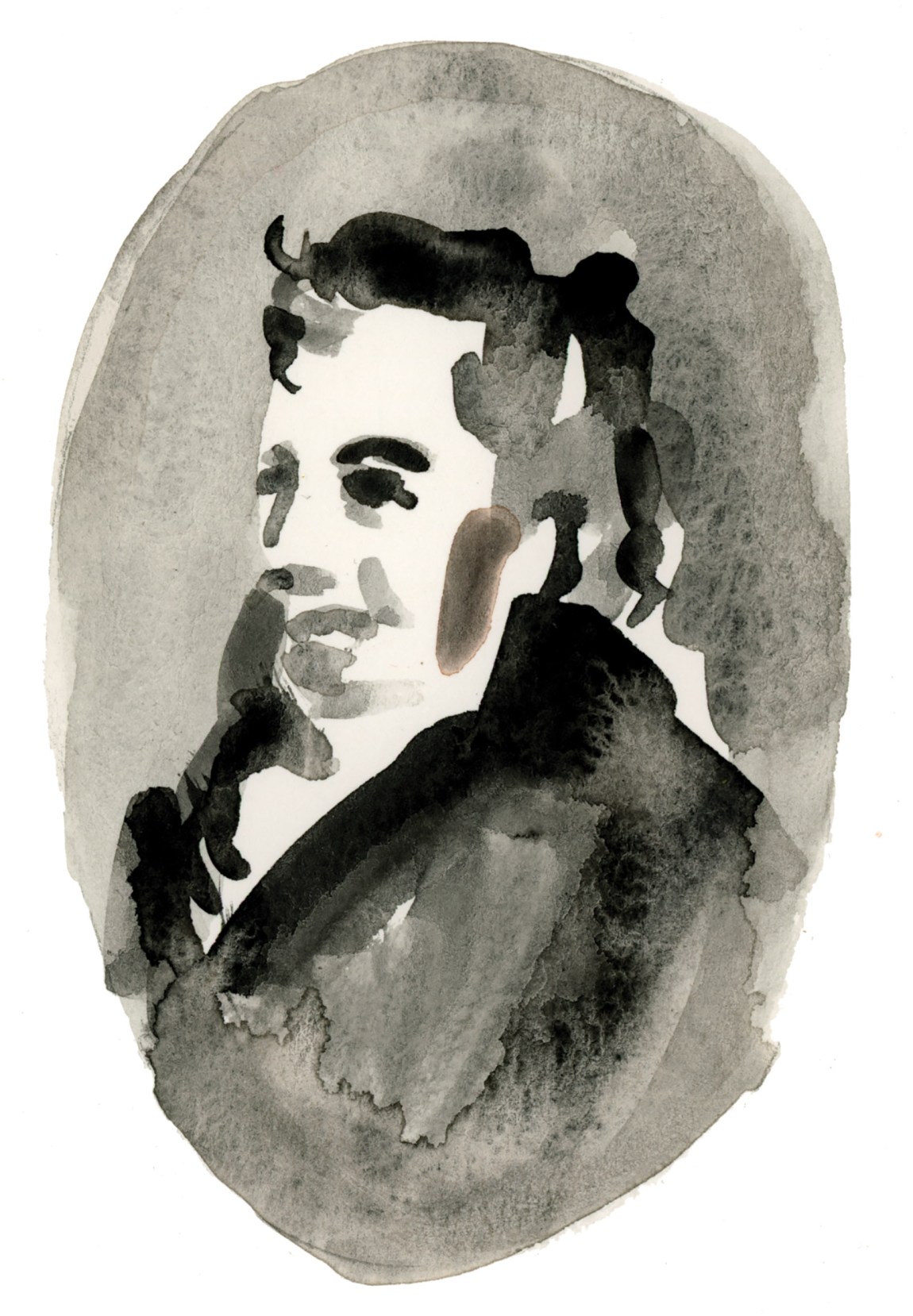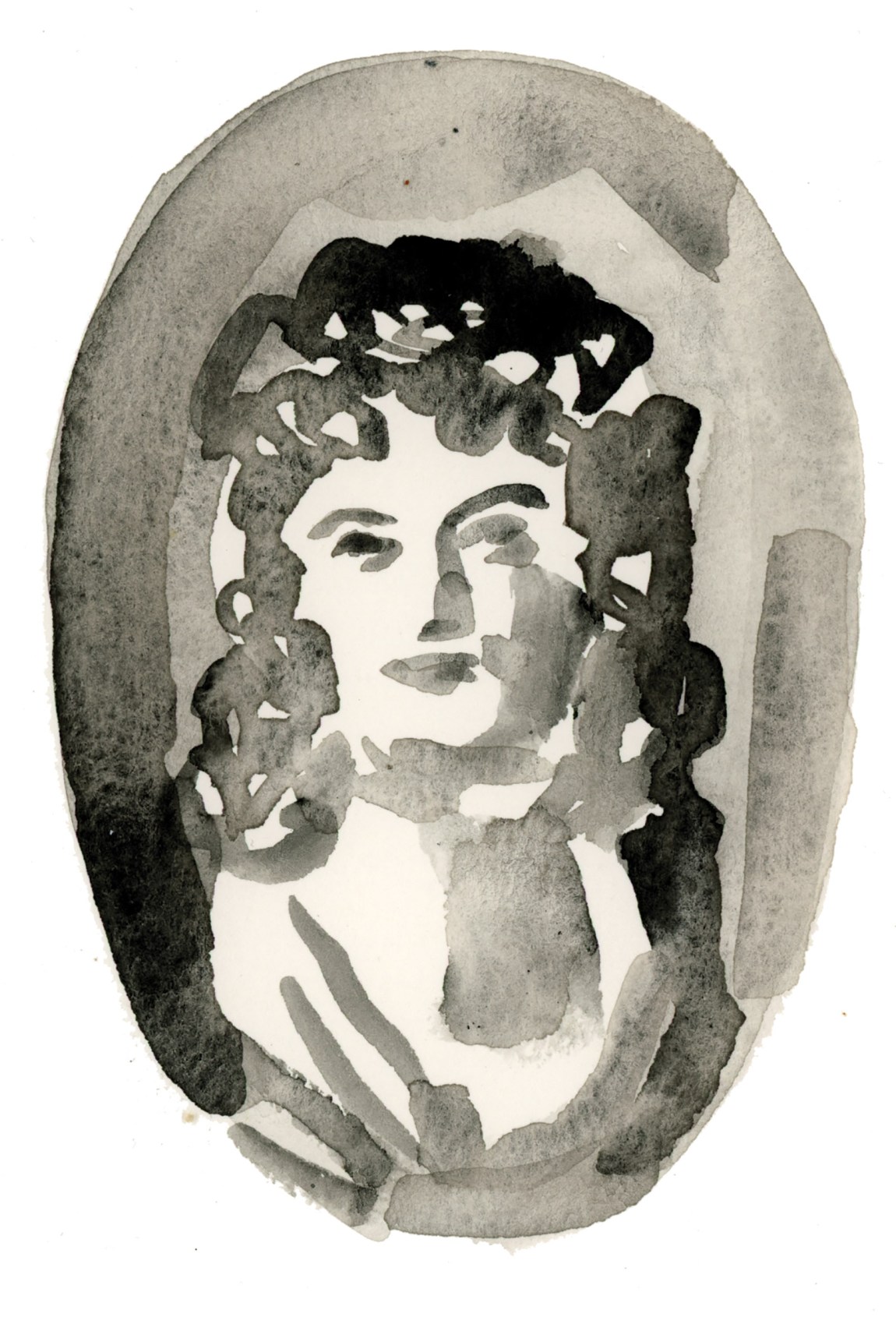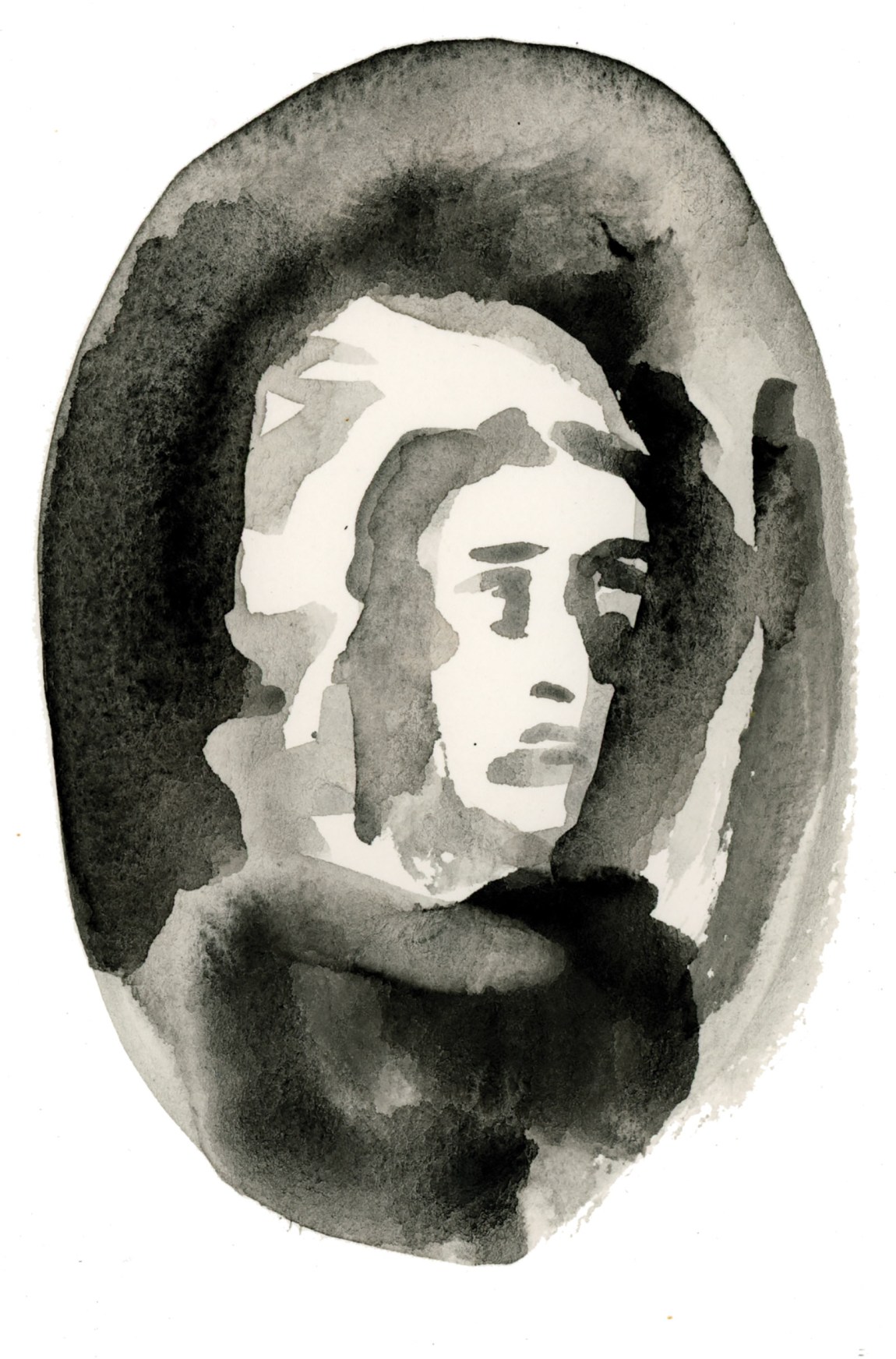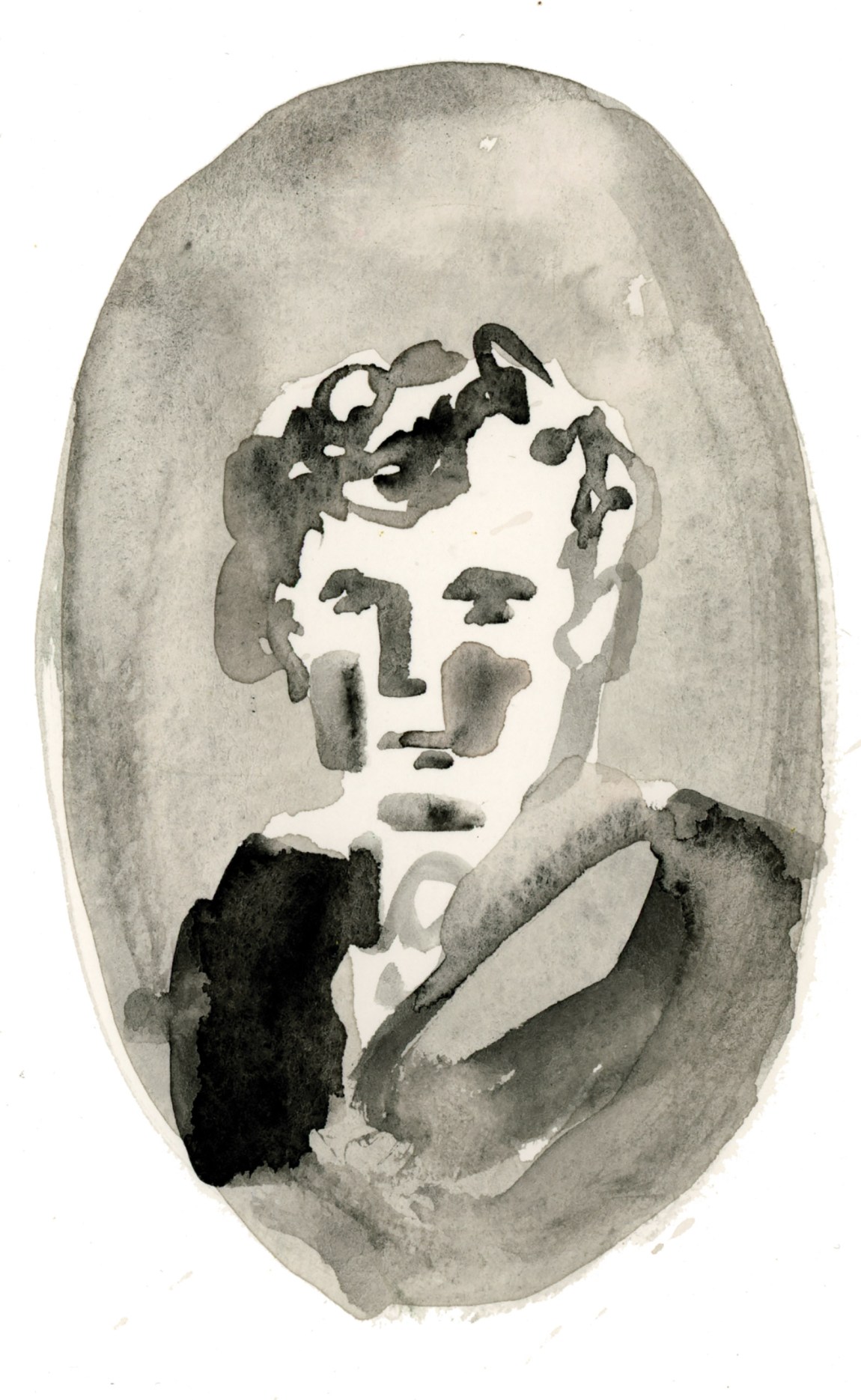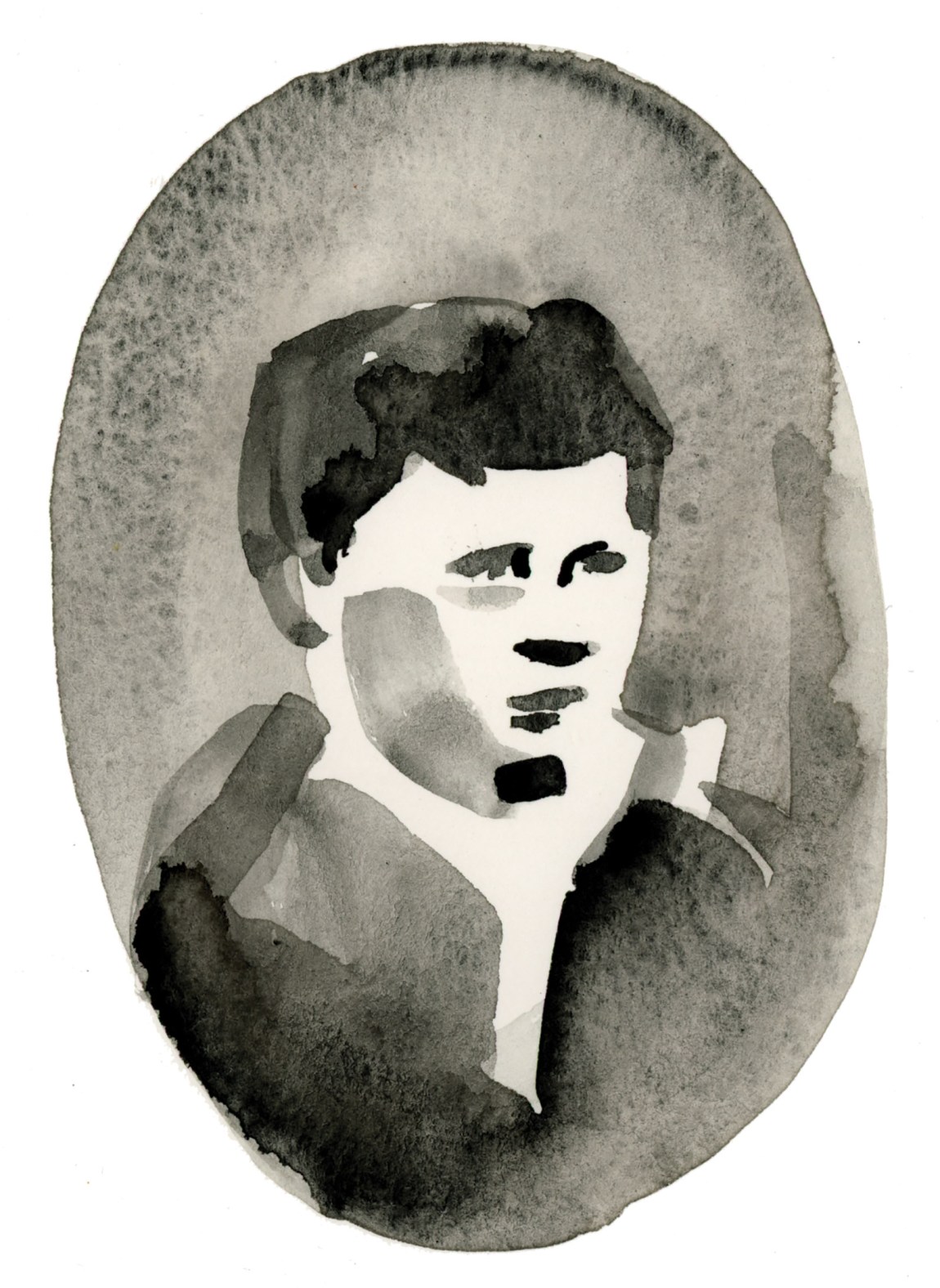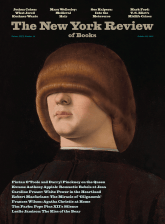The cult of individuality was born amid a melding of minds. Meldings must be preceded by meetings, of course, and the meetings took place in Jena, a university town in the German duchy of Saxe-Weimar with a population of 4,500 or so. If Jena was small, the minds that gathered there in the last years of the eighteenth century were large, and included the most consequential poets, critics, and philosophers of the era. The sparks they threw out electrified the world.
Why Jena? In Magnificent Rebels, an engrossing chronicle of the early German Romantics, Andrea Wulf tells us that its university fell under the governance of four different Saxon dukes, which impeded orderly, top-down rule and allowed its faculty a fair amount of freedom. Johann Wolfgang von Goethe was deeply involved too. In the 1790s he was no longer the slender, long-tressed author of The Sorrows of Young Werther. Now in his forties, he had seen his worldly influence expand along with his girth. He was a cherished adviser to the Duke of Saxe-Weimar and had considerable say in the university’s appointments.
Although based in Weimar, Goethe frequented Jena because of the intellectual companions he found there. Dearest to him was the poet, playwright, essayist, and journal editor Friedrich Schiller, but he learned much from the scholarly Wilhelm von Humboldt, who called the wide-ranging conversations among them “social thinking.” Because Goethe fancied himself a man of science as much as a man of letters, he was especially excited by the occasional appearances of Wilhelm’s charismatic younger brother, Alexander, a prodigious naturalist, experimentalist, and, later, explorer.1
When did things turn Romantic? In one version of the story, the crucial addition was the philosopher Johann Gottlieb Fichte, perhaps the greatest of the German idealists. He came to Jena in 1794, after Goethe got him a university appointment. Fichte’s grand project was a systematic account of human knowledge, what he called his Wissenschaftslehre. In a book he was writing that year, he deployed his celebrated thesis-antithesis-synthesis triad—the self being the original “thesis.” For Fichte, everything started with a transcendental, freely self-positing Ich, or “I”—taking the “I” more as an activity than an entity—which in turn posited a “Not-I,” the limited physical world, which provided a check on the activities of that I.
“Think of the wall,” Fichte urged his students, who soon flocked to him in large numbers. “Now, gentlemen, think of the one who thought of the wall.” What happens when the “I” makes itself the object of reflection? His detractors suspected that this approach amounted to solipsism, but his students heard a heady form of liberation: in Fichte’s account, the freedom of the self-determining “I” ultimately led to a vision of political freedom; the proper aim of government, he declared in a 1794 lecture, was to make itself unnecessary. Wulf is convinced that Fichte’s imperial “I” was an engine for Romanticism, because it made us free: “We don’t talk about Fichte’s self-determined Ich any more because we have internalised it. We are this Ich.”
Jena gathered thinkers on the page as well as in person; influential publications were based there, including the daily Allgemeine Literatur-Zeitung, the leading German critical review, while Fichte started the Philosophisches Journal with his colleague Friedrich Niethammer. There was also Die Horen, the monthly journal of culture and ideas that Schiller launched in 1795. Among the luminaries he tapped were Goethe, Fichte, and Wilhelm von Humboldt, whose own vision of individuality later inspired J.S. Mill’s On Liberty. But Schiller was also taken by the contributions of an up-and-comer named August Wilhelm Schlegel. Recognizing a first-rate mind and a kindred spirit, Schiller persuaded him to move to Jena and join the conversation.
He got more than he bargained for. With Schlegel came Caroline Böhmer, his dazzling partner (and soon his wife). Böhmer—like Wulf, the child of an eminent professor—was a widow with a young daughter, and had spent time in prison for her revolutionary sentiments. Now she and Schlegel were raising a rather precocious girl and translating Shakespeare into German. Friends remarked on her intense blue eyes and, most of all, her penetrating intelligence.
Sexually, her relationship with Schlegel was an open one. Creatively, it was intimate and binding. Working on Romeo and Juliet, the two scribbled over each other’s copy, revising and revising, sometimes spending hours over a single line as they sought to reconcile meter, melody, and meaning. Translations of many more Shakespeare plays followed in the ensuing years. Although her contribution went uncredited in print—Wulf speculates at one point that the former political prisoner might have been “wary of too much attention”—their labors made Shakespeare a national poet for Germans. (Even today, Wulf notes, Shakespeare’s plays, often in the Schlegel renderings, are staged in Germany more often than in Britain.)
Advertisement
At Jena, Schlegel’s contributions to Schiller’s Die Horen—and then the yearly Muses’ Almanac, which Schiller launched in 1796—provided a great deal of his income. He also reviewed regularly for the Allgemeine Literatur-Zeitung, with Caroline sometimes pitching in, in whole or part; these pieces were, in any case, unsigned. (Schiller wasn’t a fan of bylines, either: Wulf notes that in Die Horen, poems by women were printed anonymously, but the same rule applied to poems by men.) A few months later, Schlegel’s younger brother, Friedrich, who went by Fritz, joined their household. Fritz worshiped Caroline—“Very early on,” he told his brother, “I felt the superiority of her mind over mine”—and the three of them found a spacious three-story residence on Leutragasse, a block from the market square.
Fritz was the more magnetic and intellectually flamboyant of the brothers, and probably the most politically radical of what Wulf calls the Jena Set. “The French Revolution, Fichte’s philosophy, and Goethe’s Meister are the greatest tendencies of the age,” he declared. He cherished the ideal of personal autonomy. “My goal is to live—to live free,” he once wrote to August Wilhelm. He was also hotheaded, self-admiring, improvident, and imprudent. He made Schiller’s skin crawl; others found him enchanting.
Individuality was his watchword: “It’s precisely individuality that is original and eternal in human beings.” He saw a “divine egoism” in “the development of individuality as the highest calling.” At the same time, he was a voluble enthusiast for communal cognition—what the Schlegels liked to call “symphilosophizing.” That the Frühromantiker—the early Romantics—prized both individualism and intellectual communion was a productive paradox. “You shouldn’t try to symphilosophize with everyone, but only with those who are à la hauteur,” Fritz cautioned. Caroline had always attracted such people. Novalis—aka Friedrich von Hardenberg, a college friend of Fritz’s—was becoming a regular visitor and was expansive on the topic of communal collaboration. “Writing in company is an interesting symptom giving us an inkling of a great development in authorship,” he maintained. “Every person who consists of persons is a person to a higher power, a person squared.”
By 1797 the Jena Set, in various combinations, was a social and intellectual fixture; its members went to hear Fichte lecture and musicians give concerts, but most of all they wrote and they talked, mainly about writing. Wulf reproduces a characteristic entry from Goethe’s diary that spring:
Morning: revised poem, then A. v. Humboldt, further optical experiments. Then Schlegel. Lunch with Schiller. Afterwards W. v. Humboldt and Prof. Niethammer; discussed Fichtean theory. Evening in the club.
The origin story of Jena Romanticism is one of friendships, but it is also one of feuds, notably between Friedrich Schlegel and Schiller. In Wulf’s telling, Fritz started it. Beginning in 1796, he published a series of searing attacks on Schiller as a writer and journal editor. (He pronounced a poem of Schiller’s so banal that it would be improved if read backward.) It doesn’t seem to have occurred to him that Schiller was effectively August Wilhelm’s chief patron. Yet Fritz, as other scholars have noted, already had reason to feel wounded: he had eagerly been submitting pieces to Schiller and never managed to get published by him.2
Even as Schiller the editor spurned him, Schiller the essayist spurred him. In January 1796 Fritz wrote to August Wilhelm of having read Schiller’s essay “On Naive and Sentimental Poetry,” which had just been serialized in Die Horen. “I was so occupied with Schiller’s theory of the sentimental that for a few days I did nothing but read it and write notes,” Fritz told his brother. “When something like that cooks inside me, I’m incapable of doing anything else calmly.” He may have realized, as the Germanist Hans Eichner maintains, that his literary-critical project had been overtaken; in the event, he resolved to sketch a new poetics of his own.
And he kept up his attacks on Schiller—disparaging the very journals that his brother was writing for at a handsome per-page rate. Schiller soon decided to cut them both off. “I would be very unhappy to be held responsible for all his actions,” August Wilhelm wrote to Schiller, alarmed at the loss of a paycheck and a platform. But how to reconcile this disavowal with all the talk of symphilosophy? Were the two Schlegels really so out of step in their views?
Goethe valued the Schlegels—their critical exaltation of his work helped secure his godlike reputation—but he loved Schiller and tried to heal the breach, to no avail. Wilhelm von Humboldt and, especially, his wife were loyal to their friend and now shunned the Leutragasse household. (“She’s a snake,” Frau Humboldt warned Schiller’s wife about Caroline.) Fritz, amid the rising tensions, decamped for Berlin. There he established a fast friendship with the young novelist Ludwig Tieck and then fell passionately in love with a woman eight years his senior, Dorothea Veit, the unhappily married, intellectually formidable daughter of the German-Jewish philosopher Moses Mendelssohn.
Advertisement
For the Schlegels, the great Schiller’s antagonism was unsettling but also galvanizing. They started a journal of their own, the Athenaeum, which made its debut in 1798 and was particularly devoted to publishing “fragments”—aphorisms and brief meditations. They badgered their friends for such fragments, though most, in the end, were Fritz’s handiwork. At the same time, Fritz’s fealty to Fichte was fading. This may have been significant. The scholar-philosopher Frederick Beiser, a prominent interpreter of German idealism, aligns the “Romantic imperative” with the rejection of foundationalism—the completist, one-theory-to-rule-them-all ambition that Fichte represented. “No system can be absolute,” Fritz declared in this spirit. “One can only become a philosopher, not be one.” In a fragment describing Fichte’s efforts to establish a foundation for all knowledge, Fritz likened his former hero to a drunk who clambers up one side of a horse only to fall off the other. That wasn’t the best way to get closer to your destination.
Would a more agile thinker take them further? In the summer of 1798 the Jena Set was excited to learn that the philosopher Friedrich Schelling had—again, with the assistance of Goethe—gained an appointment to the university, at just twenty-three years of age. Where Fichte’s lifelong project was a Wissenschaftlehre, the study of knowledge, Schelling called his system a Naturphilosophie, a philosophy of nature. Goethe, with his scientific inclinations, found Schelling’s work more congenial than Fichte’s, and he bubbled with enthusiasm when he read, the next year, the young man’s latest book about his philosophy of nature. Schelling, who had studied chemistry at Leipzig, displayed an immense knowledge of astronomy, botany, chemistry, physics, physiology; the names of scientists like William Harvey and Alessandro Volta stippled his pages.
For a while, Fichte took Schelling to be a protégé who was merely elaborating his work. But others understood their relation, in Fichtean terms, as that of thesis and antithesis. “As long as I myself am identical with Nature,” Schelling had written, “I understand what a living nature is as well as I understand my own life.” To paint in the broadest of strokes, Fichte wanted to show how the mind generated the natural world; Schelling wanted to show how the natural world generated the mind. After all, however the mind arose and functioned had to be consistent with the laws of nature.
Schelling’s time in Jena deepened his aesthetic engagements. Perhaps influenced by Novalis and the poet Friedrich Hölderlin, he came to champion art as “the only true and eternal organ and document of philosophy, which always and continuously documents what philosophy cannot represent externally.” Novalis, won over, declared that Schelling “seems to have a very poetic mind.”
The question arises, then, of whether the crucial fuel for Romanticism was Fichte’s Ich or Schelling’s Natur—whether the critical move was the centering or the decentering of the self. Bishop Berkeley, back in the first decade of the eighteenth century, had proposed that the material world we experience was really a congeries of ideas in the mind of the knower, but the Romantics found little illumination there. When we think of Romantic subjectivism, we think of a landscape by Caspar David Friedrich (the wanderer on a foggy escarpment) or a poem by William Wordsworth (“of all the mighty world/Of eye, and ear,—both what they half create,/And what perceive”), each conveying a reverence for the real. Perhaps the Romantic achievement was to see how the natural world wasn’t merely a projection of the mind; that the mind was, in important respects, at play in the natural world, where it could be startled by things it neither expects nor fully grasps.
In early 1799 Dorothea Veit divorced her unpoetical husband in a Jewish court and made a life with her young lover. In Lucinde, a feverish, scandalously autobiographical novel about their relationship that appeared in May, Fritz suggested that greater excitement was to be found in “the voluptuousness of her developed figure” than in the “fresh appeal” of a “virgin love.” He did most of his writing in her presence; like August Wilhelm and Caroline, the two became intimate collaborators.
After a long summer of love, Fritz returned to his brother’s household on Leutragasse with Dorothea, who was working on an autobiographical novel of her own. Fichte was now in Berlin, having been ousted from his post after accusations of atheism, but other bright lights were arriving. Tieck and his wife, Amalie, set up in Jena, a few minutes’ walk from the Schlegels. Novalis maintained a tight orbit, and Schelling was a constant presence. This was the forcing house in which the idea of Romanticism—or a set of ideas about it—first bloomed.
It was Fritz, in the pages of the Athenaeum, who introduced romantisch as a term for a cultural-historical sensibility. It drew from words like Romanze and Roman—alluding to both medieval romances and modern novels. And the romantisch was, for him, a capacious category, distinguishing the organic and vital from the rule-bound and classical. It encompassed the epic poetry of Tasso, the plays of Shakespeare (which were judged to be alive and organic, unlike the regimentations of Racine), and the contemporary novels of Jean Paul. In a 1798 lecture at the university, August Wilhelm spoke of “the perfect masterwork of higher romantic art” and associated the spirit with Goethe, Calderón, and the Scottish ballads.
“Romanticism,” for the Jena Set, named a tendency, not a period, and was as much backward-looking as forward-looking. Novalis, for one, was fascinated by medieval Christianity—it had a magic (all those Gothic paintings!) that Protestantism struggled to purge and that should be reclaimed in a new religion. Love was another keynote. “Only through love and the consciousness of love,” Fritz wrote, “does man become man.” Romantic ardor, then, was also a part of Romanticism. Somehow the word served as a summoning. At first championing a tendency that belonged to no particular time, the early Romantics helped conjure a movement for their own time. The ferment spilled over national borders. It helped that Samuel Taylor Coleridge—an ideologist of Romanticism as well as a practitioner of it—freely borrowed (and, yes, stole) from Schelling and the Schlegels.
Romantic pursuits of the carnal variety kept things on the boil. The coterie may have bested Bloomsbury in polyamory. Fritz was soon courting the writer Sophie Mereau (“Get lusty, and be lewd,” he urged), after which Dorothea had a fling with a young scientist friend of the set. August Wilhelm’s frequent affairs included one with a well-known actress and another with Tieck’s married and very pregnant sister, Sophie Bernhardi. (August Wilhelm: “I lie at your feet.” Sophie: “My burning desire is eating me alive.”) Caroline looked on his affairs with equanimity, especially since she was, starting in 1799, having a far more passionate one with Schelling.
Unsurprisingly, venomous gossip circulated through the town. More elevated aspersions circulated, too: that fall, the Allgemeine Literatur-Zeitung blasted away at the Athenaeum. The ambient hostility served, at first, to draw the Jena Romantics closer together. August Wilhelm wrote, “People hate us—good! They curse us—even better!” Schelling, who was writing poetry about Caroline (awful stuff: “A god forever wed you to my soul/In a solemn bond of everlasting beauty”), became a daily visitor, even as Caroline and August Wilhelm were beavering away on the Henry IV plays. The friends yearned to be all under one roof. For a period in November, they got their way: Novalis, Schelling, Caroline and August Wilhelm, Fritz and Dorothea, and the Tiecks convened at the Leutragasse house, reading their poems and translations and essays to one another. It was a cuddle puddle of Luftmenschen, symphilosophizing at its most ecstatic. “Love is friendship from all sides and in all directions: universal friendship,” Fritz had written. Here, then, was a household lambent with love. What could possibly go wrong?
It was nature itself, fittingly, that disrupted this communion of souls. The winter of 1799–1800 was singularly bitter; for long periods, they could scarcely go outdoors. Everyone was cooped up, and everyone was on edge. The result calls to mind Schopenhauer’s parable of the porcupines—on a frigid day, they huddle together for warmth, only to find themselves pricked and pained. Or as Fritz had noted, “The consciousness of necessary limits is the most essential and rarest thing in friendship.”
Wulf, who has a novelistic eye for the telling detail, provides a riveting account of how raptures gave way to ruptures. Fritz blew up at Dorothea for failing to grasp the meaning of his new poems. He also stopped speaking to Schelling and to Caroline, offended (as August Wilhelm was not) at how publicly the two were canoodling. Dorothea, who no longer had to be on Caroline’s good side for Fritz’s sake, declared her to be “hard as stone.” Novalis himself started to turn on Caroline, judging her conduct a threat to the beloved community. When Fichte paid a visit from Berlin, he discovered that everyone was mad at him, too, because he hadn’t broken off with the editors of the Allgemeine Literatur-Zeitung. When he learned that the Schlegels told Schelling he’d slighted him, he decided that they were “liars and blackhearted traitors.” (Fichte and Schelling soon had a bitter falling-out themselves.) Tieck, now afflicted with gout, decided that Dorothea was a “monster,” Caroline a “hermaphrodite,” and the household “a big farm full of pigs.” It was the winter of hate.
The experiment in symphilosophizing never quite recovered. By the time August Wilhelm and Caroline were divorced in 1803, most of their set had already left Jena behind. Important work had continued, it should be said. After Novalis died of consumption in 1801, Fritz and Tieck assembled his literary remains in a volume that established his legend and reputation. In 1801, too, Hegel—who had shared an apartment with Schelling and Hölderlin during their undergraduate days—joined the University of Jena, although his debut at the lectern was so inauspicious that Goethe wondered whether someone might coach him in public speaking. That fall, Hegel published an essay arguing for the superiority of Schelling’s system to Fichte’s, and Schelling, assuming that the Swabian stiff would serve as his disciple, invited him to help edit a new journal of critical philosophy. Of course, Schelling made the same mistake about Hegel that Fichte had made about Schelling: Hegel wasn’t content to craft an appendix to the master’s system; he meant to supplant it with his own.
“It was impossible to inveigle/Georg Wilhelm Friedrich Hegel/Into offering the slightest apology/For his Phenomenology,” W.H. Auden jested. That wasn’t for lack of trying, especially on Schelling’s part. Still, Hegel decamped from Jena in early 1807, before that reputation-making work appeared. And already Jena was known less as a hive of high theory than as the site of a battle a few months earlier in which Napoleon’s army overwhelmed a last-ditch effort by Prussian and Saxon forces to fend it off. The fact that the town’s intellectuals were mainly supporters of Napoleon—Hegel saw him as a “world soul,” scrubbing away the vestiges of feudalism and expanding human freedom—didn’t stop the emperor’s soldiers from pillaging their residences or using their books for kindling. The row of houses near the Schlegels’ old residence on Leutragasse caught fire, too. One thing the smoke couldn’t obscure was that Jena Romanticism had seen its day.
Given the role of symphilosophy and “social thinking” in the movement, it’s apt that Wulf’s book isn’t the only one on the topic to appear in English this year; it was preceded by Peter Neumann’s lean, evocative Jena 1800. While Wulf makes excellent use of the vast correspondence of her principals, Neumann’s account—at once condensed and kaleidoscopic—appears to draw heavily from secondary sources. At the same time, he freely avails himself of the narrative techniques of fiction, ascribing thoughts to his characters, where Wulf more clearly indicates the letters and diaries she’s drawn from. They also differ in the occasional detail. Neumann says that Fichte, charged with atheism, lost his job despite having published a pamphlet in his own defense. Wulf plausibly suggests that the fiery defense sealed his fate. (Goethe, playing the diplomat, was hoping to elicit some strategic groveling.) Neumann says that “luckily for them,” August Wilhelm and Caroline saw a helpful recent precedent for their divorce in the one that Sophie Mereau had secured. Wulf points out that the Schlegels saw the earlier divorce as a problem, because the authorities wouldn’t want these things to become routine.
More consequential, from the perspective of literary history, was Goethe’s eventual divorce, or estrangement, from what he took to be Romanticism. As Rüdiger Safranski relates in a fine biography, Goethe: Life as a Work of Art (2013), he was wounded by a slighting passage about Wilhelm Meister’s Apprenticeship that appeared in the posthumous Novalis collection, and he was stung later when a critic in 1808 dared to rate Friedrich Schlegel and Novalis above him as poets. Goethe and his friends were soon thundering against the fad for obscurantist, neomedievalist rhapsodizing. (Lotte in Weimar, Thomas Mann’s fictional rendering of the older Goethe and his world, captures the disaffection well.)
Where did that leave Schiller? He has justly been called the “spiritual grandfather of German Romanticism,” not least because his own literary analyses presaged Friedrich Schlegel’s. Yet Schiller, along with Goethe, has also been taken to represent an alternative to Romanticism called Weimar classicism. In literary history, too, the personal is the political. The clash between Weimar classicism and early Romanticism is largely factitious; the clash between Friedrich Schiller and Friedrich Schlegel was entirely real.
Inevitably, Jena’s luminaries, post-Jena, were not always quite so luminous. Fichte, to be sure, never ceased to work on his grand system, and when Wilhelm von Humboldt started a university in Berlin in 1810, he was appointed rector. (He was too cantankerous to last long in the position.) Tieck—along with his sister Sophie and his daughter Dorothea—carried on the Shakespeare translation project that August Wilhelm and Caroline had started. August Wilhelm spent thirteen years on the payroll of Madame de Staël (who proved Romanticism’s most effective publicist) and, having made a study of Sanskrit, ended up as a professor of Indology at the University of Bonn. Caroline married Schelling in 1803 and died of dysentery six years later. Schelling survived her by four and a half decades, taking up a series of respectable academic posts even as he disappeared into Hegel’s deepening shadow.
And what about Friedrich Schlegel, the most Romantic of the early Romantics? He was, after all, the one who first theorized the concept, who produced the fieriest of fragments, who sought, in his protofeminist novel, to integrate erotic and spiritual love, and who had the greatest reverence for revolution. You could say that he underwent a personal revolution: he became corpulent, Catholic, and conservative. August Wilhelm was aghast at Fritz’s new commitments and convictions; so was Goethe, who marveled that an intellect trained “in the brightest light of reason” should have become “misled into veiling itself, playing the bogeyman.”
Around the same time that Fichte was given a university to run, Fritz and Dorothea (who joined him in his Catholicism) moved to Vienna, where he served as a propagandist for Prince Metternich. The republican had turned monarchist, bewigged and bemedaled. When Friedrich von Schlegel—he was ennobled in 1814—published an edition of his complete works, in 1823, he pointedly omitted Lucinde. Had he become his own antithesis? Or had he, as a younger cohort decided, merely revealed the movement’s dark heart?
His example was among the reasons that Romanticism itself became such a bogeyman for the next generation of Romantics. It was a case not of the revolution devouring its children but of the children devouring the revolution. Most notably, Heinrich Heine—by our lights, the very model of a mid-period Romantic poet—was withering about the Jena Set. Writing in the 1830s, he lambasted a “neo-medievalist” school that was, he believed, at odds with humanism and complacently apolitical (he was allied with the radical Young Germany movement), and he compared the self-heroizing Schlegel brothers to Tom Thumb and Puss in Boots. Sophisticated opinion followed suit, seeing not magnificent mutineers but foppish reactionaries.
From our perspective, the disavowal is dizzying. Romanticism by any other name now reigned supreme in the culture—even as its own name became a term of abuse, repudiated by its foremost patron, denounced by its young practitioners, and denigrated by both as a source not of progress and illumination but reaction and darkness. Jena’s soulful young rebels had made the unpardonable error of growing old. A couple of centuries later, they still confront us with a welter of stormy contradictions—a hot mess of amity and enmity, nestling and wrestling. Then again, what could be more romantic?
This Issue
October 20, 2022
The Two Elizabeths
‘She Captured All Before Her’
Lucky Guy
-
1
He was the subject of Wulf’s previous book, The Invention of Nature: Alexander von Humboldt’s New World (Knopf, 2015); reviewed in these pages by Nathaniel Rich, October 22, 2015. ↩
-
2
See, for instance, Hans Eichner, “Einleitung: Der Streit mit Schiller,” in Friedrich Schlegel, Charakteristiken und Kritiken I, edited by Hans Eichner (Paderborn: Ferdinand Schöningh, 1967). ↩


